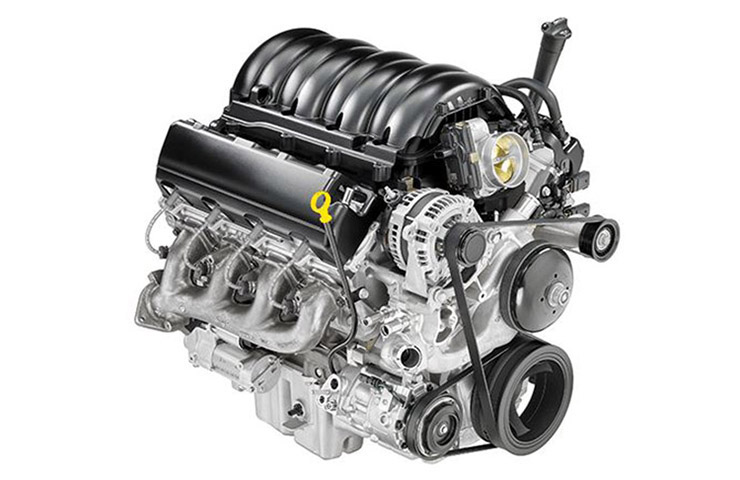If an engine ticking or knocking sound is noticed on some 2019-2022 Silverado, Sierra; 2021-2022 Tahoe, Suburban, Yukon and Escalade models equipped with the 5.3L V8 engine (RPO L84) (Fig. 14) or 6.2L V8 engine (RPO L87), it may help diagnosis to isolate the sound to the upper or lower end of the engine, narrowing the possible location of the sound source.
 Fig. 14
Fig. 14
To verify if the sound is coming from an accessory drive component, remove the accessory drive belt and briefly run the engine.
Next, using GDS2, select Cylinder Power Balance in Fuel System section of the output control functions. Cancel cylinders one by one and check if the sound noticeably changes. If the sound changes, make a note of which cylinder(s) made the most impact on the noise.
TIP: Do not use the GDS2 control function Cylinder Deactivation for this procedure. Cylinder Deactivation is for deactivating the lifters and is intended for misfire/Dynamic Fuel Management system diagnosis. Using this function for noise diagnosis can be misleading since it may change/eliminate a lower end noise and give the impression it is a lifter since that is what is being commanded, potentially leading to unnecessary lifter replacement.
Engine sounds that are noticeably affected by cylinder cancellation are typically considered a “lower end noise,” such as a connecting rod bearing, wrist pin, etc., whereas valvetrain noises are not generally impacted by this procedure.
Review the appropriate Service Information engine noise diagnostics for further isolation of a specific component.
– Thanks to Tim Lightfoot


















